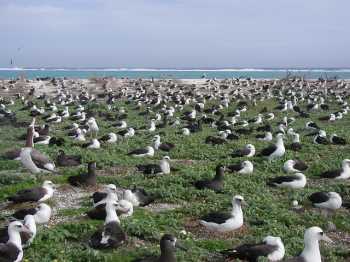The research team associated with the Hawai‘i Institute of Marine Biology talked to 25 experts about the various threats, and ranked them using an index of ‘ecological vulnerability' that accounted for five ways a human activity can adversely impact a coral reef: the area and frequency of impact, the number of species impacted, the biomass lost and the recovery time following the impact. The top four threats were sea level rise, sea temperature rise, marine debris and alien species. Also listed as threats were pelagic long-lining and net fishing. All these threats have the potential to deleteriously affect seabirds, including albatrosses.
The Northwestern Hawaiian Islands are managed as the Papahānaumokuākea National Marine Monument and were this year made a World Heritage Site (search for earlier stories on this web site).
Click here to read more about the research.

John Cooper, ACAP Information Officer, 20 September 2011

 English
English  Français
Français  Español
Español